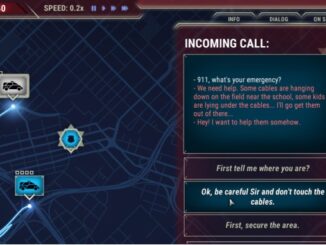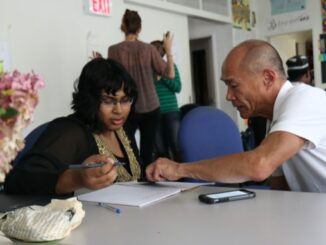
As someone who has worked for many years in the field of sustainability learning, I have been constantly disappointed by the failure of ‘awareness raising’ to achieve any lasting meaningful results.
While knowledge, and the dissemination of facts is important – we have seen the results when misinformation and disinformation, is widely spread, it would appear that simply ’knowing more’, or having access to ‘better’ information is not enough to foster meaningful action on some of our most pressing issues.
How Games Move US – Emotion by Design is available on Amazon
Knowledge is like a raw material, but we need properly honed tools to work with it to achieve something. One important cognitive tool is critical thinking, but even that proves to be lacking when it comes to action such as protecting the future of the planet, aiding and protecting vulnerable others (human and otherwise) or recognising the morality (or otherwise) of specific actions.

We may ‘know’ the rights and wrongs of some situation, but still find ourselves choosing inaction, or looking away. It seems only emotional ‘tools’ are enough to tip us into action. Empathy is often cited as chief among these. Surely if we could only ‘step into the shoes’ of the desperate people who have travelled to these shores in small boats, we could never consider packing them into planes and sending them to Rwanda, for example.
But is it as simple as that, and if it is, how can games-based learning, or gameful design make us more empathic?
Types of Empathy
The above example shows us only one kind of empathy, however. According to psychologists, there are three types. If we were moved (and, importantly, also had the agency) to make the decision to act humanely towards refugees and not send them to Rwanda, we would be exercising Compassionate empathy.
That, in turn could have been prompted by either of the other two kinds of Empathy.
Cognitive empathy is an intellectual understanding of the feelings of another person. It is important in communication, because it allows us to state our thoughts in a way that will effectively reach the other person. Sometimes called ‘hard’ empathy, it is important to remember that this is not equivalent to being ‘unfeeling’. This is the kind of empathy that needs to be exercised by those in the medical or caring professions. If they allowed themselves to feel the third kind of empathy, they would likely buckle under the emotional strain, and be unable to care effectively for themselves or others.
Emotional empathy is sometimes described as ‘feeling what others feel’. It is a deeper identification with the emotional state of another. Deanna Troi, the Star Trek empath, exhibited this form of empathy, where she actually shared the emotions of the person she was feeling. If we are not half Betazoid, we usually do this by remembering what we felt like when going through a similar experience, or if we have not had such an experiencing, by imagining what it would feel like if we did.
Who or what can we have empathy for?
I once designed a game, which was billed as ‘eliciting empathy for an ecosystem’. In reality, this is impossible, for two reasons. Empathy as it is described above, can only ever really be felt for other members of our own species. It requires that we understand and share the same cognitive processes. We cannot ‘share’ or even have intellectual understanding of our cat’s feelings, because we have no idea what cat emotions are like. This obviously applies even more to non-sentient entities such as ‘The Planet’, or an ecosystem (even though they comprise living beings).

However, we can exercise something that looks and feels a lot like empathy in two ways. Firstly, we do have a ‘recognition’, if not an understanding, of what certain emotional states, such as distress, look like when they are demonstrated, so we can act to prevent or mitigate them, of keep acting in the same way to enhance what looks to us like ‘happiness’.
Secondly, and starting to move into ‘playfulness’, we can imagine what it would be like to be both ourselves (with all the cognitive and emotional equipment that implies), and the entity we are trying to ‘empathise’ with. We anthropomorphise the animal and endow it with human feelings and thought processes. Arguably we can do the same with ‘The Planet’. Indeed, the concept of Gaia does this very thing.
And this is an important idea to consider if we want to design learning games, or other playful activities to facilitate empathy. Research has shown that the more (evolutionarily) distant a species is from us, the less likely we are to show compassion for it. This is why cuddly mammals work much better as poster children for environmental charities, even when snails or insects may have more ecosystem ‘importance’ in the specific ecological niche being discussed. So, this first step of making an entity ‘more like’ us when designing an empathy intervention, may have considerable impact on its effectiveness
Playful Empathy
Game which have empathy as a central theme often put us in ‘another person’s shoes’. Of course, there are no limits of the characters we can play in a game setting, so this would imply that they are an ideal medium for allowing us to play other genders or races, or to experience cognitive or physical differences, or even to live in another time or be another species.
Bury Me My Love is an immersive and affecting experience of the story of a Syrian refugee, but you don’t always have to play the victim or the ‘good guy’ to appreciate how systems affect people’s actions and outcomes Papers Please, puts you in the role of a border guard and is an increasingly uncomfortable experience as you play.
Another game which takes you into the experience of a refugee is Salaam by Lual Mayen,
While these games allow you to play a role, if you are after an actual tabletop RPG, then the ultimate tabletop experience is provided by Logan – where you get to play (your own) version of the designer’s real-life experiences.
The Troubled Life of Billy Kerr, a board game, puts you into a medical care setting, where you work as part of a medical team caring to a terminally ill man. Can you keep him alive long enough to hear his story, which also will reveal the story of those caught up in the ‘Troubles’ in Northern Ireland? Thank you to Michala Liavaag for telling me about this game.
Human beings are wired to respond to narrative, and again, this is where games and similar playfully designed experience perform well. Many award winning titles such as Life is Strange and If Found use queer and trans characters and rich storytelling to present queer experience that moves well beyond stereotypes to present a the full gamut of emotional highs and lows
And because playful design doesn’t have to mean ‘games’, we can visit the wonderful travelling exhibits of the Empathy Museum to hear real stories, told by real voices in the Human Library exhibit, among many others.
Immersion is an important characteristic of games which aim to elicit empathy, and all the above meet that brief. But if you want to technological help, then VR would seem to be the logical choice. Project Empathy is all about making impactful experiences for social awareness and change. Their first project was based in a US prison.

One of the most famous empathy principles, which has been around for way longer than games-based learning is the ‘Seven Generation’ principle of the Haudenosaunee Confederacy, which requires that every action one takes should be viewed in terms of its impact on the seventh generation which will follow you.
There are a number of ‘playful’ activities based on this idea. One particular favourite of mine involves both reflection on the future impacts of one’s actions as well as encouraging some analysis of your own moral compass, as you have to explain yourself. The premise is simple – take a piece of paper and write to your seventh generation descendants, explaining why are doing what you are doing, or making the decisions that feel necessary now.
Examples I would like to give here, but cannot think of any games which quite meet the criteria just now are:
- Something that takes the 7 generation idea and expands on it to emphasise one’s role in a long ‘chain’ of life with impacts from decisions which reverberate down the decades, centuries and millennia.
- A game where you play both the impacting ‘bad-guy’ and the unfortunate victim of their decisions, with equal emphasis. I did create a game like this, but it is my client’s IP (and part of an internal corporate learning programme) so I can’t use it as an example.
If you know any such games, I’d love to hear about them, so they can take their proper place in this article.
- James Bore – The Ransomeware Game - 13th February 2024
- Ipsodeckso – Risky Business - 23rd January 2024
- Review – Luma World Games - 15th December 2023





Be the first to comment